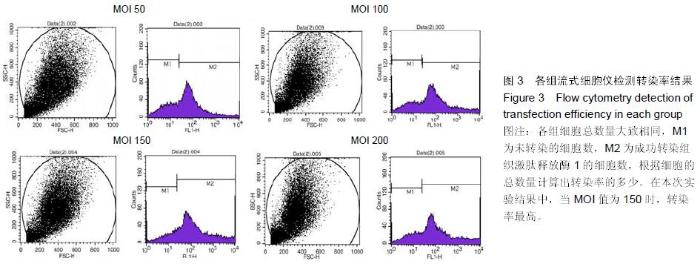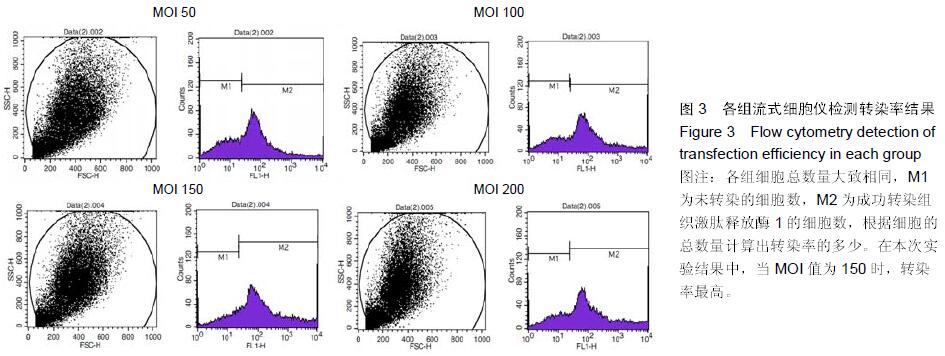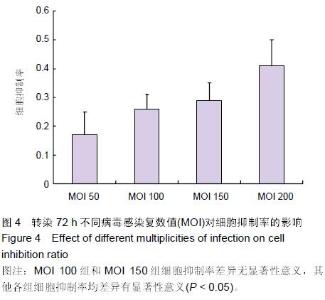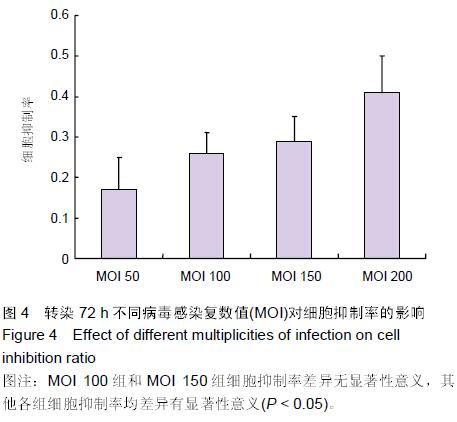[1] Traverse JH, Henry TD, Ellis SG, et al. Effect of intracoronary delivery of autologous bone marrow mononuclear cells 2 to 3 weeks following acute myocardial infarction on left ventricular function: the Late TIME randomized trial. JAMA. 2011;306(19): 2110-2119.
[2] 肖文涛,高传玉,戴国友,等.不同类型自体骨髓干细胞序贯移植治疗急性心肌梗死的临床观察[J].临床心血管病杂志,2013, 29(5): 370-373.
[3] 张敏,刘微,李擎,等.基因转染技术及其在肿瘤研究中应用的研究进展[J].中国畜牧兽医,2013,40(5):71-74.
[4] 顾加祥,尚修超,刘宏君,等.GNDF基因诱导骨髓间充质干细胞向神经细胞分化的实验研究[J].中国实验诊断学,2014,18(3): 354-357.
[5] 刘城,吴平生,王月刚,等.腺病毒介导的HIF-1基因对人骨髓间充质干细胞分化成心肌细胞的影响[J].湖北民族学院学报医学版, 2013,30(3):1-8.
[6] 姜春华,曹郁生.组织激肽释放酶的研究进展[J].中国生物制品学杂志,2006,19(3):326-327.
[7] 曹步清,刘铁牛.组织激肽释放酶-激肽系统及其与心血管疾病的关系[J].检验医学与临床,2012,9(21):2731-2733.
[8] 陆征宇,崔梅,刘艳萍,等.脑缺血后激肽释放酶-激肽系统神经血管保护机制的研究进展[J]. 神经损伤与功能重建,2015,10(4): 326-328.
[9] 戴红良,张慧云,何韶衡.缓激肽在过敏性疾病发病机制中的作用[J].中华临床免疫和变态反应杂志,2014,8(4):306-311.
[10] 鲍丹,吕丹,董伟,等.转基因表达KLK1抵抗压力负荷引起的心室重构[J].中国分子心脏病学杂志,2013,13(3):559-564.
[11] 刘心雨,温玉洁,刘陶文,等.贝那普利和厄贝沙坦对糖尿病肾病肾组织表达KLK1的影响[J].医药导报,2013,32(11):1414-1417.
[12] 娄江涛,胡成进.组织型激肽释放酶及相关肽酶在中枢神经系统中的作用[J].生命的化学,2010,30(2):307-310.
[13] 郭茂娟,范英昌,徐秀梅,等.5-氮胞苷诱导骨髓间充质干细胞向心肌细胞的分化[J].中国组织工程研究与临床康复,2007,11(46): 9238-9241.
[14] 安秀峰,黄汉昌,姜招峰.骨髓间充质干细胞向神经细胞的分化[J].生命科学,2013,25(1):84-90.
[15] 辛毅,李娜,黄益民,等.小鼠骨髓间充质干细胞定向诱导分化血管内皮细胞的实验研究[J].新乡医学院学报,2014,31(1):8-14.
[16] 张诚,杨玉龙,林美举,等.体外诱导骨髓间充质干细胞向胆管上皮样细胞分化[J].中国组织工程研究,2013,17(1):17-22.
[17] 庾佳佳,汪新柱,赵琳,等.兔骨髓间充质干细胞的分离培养及成骨诱导[J].中国组织工程研究,2013,17(6):974-979.
[18] 贾佳,胡继宏.生物活性因子修饰骨髓间充质干细胞的研究进展[J].中国医药科学,2014,4(13):48-51.
[19] 王君,张振,张玉明,等.大鼠低氧诱导因子-1α基因转染骨髓间充质干细胞的实验研究[J].现代生物医学进展,2010,10(20): 3838-3841.
[20] 杜杰,高小青,郭侃,等.GDNF基因修饰的BMSCs 向神经元样细胞的分化及神经营养因子的表达[J].泸州医学院学报,2013, 36(2):124-128.
[21] 侯淑红,王挹青,陈东平,等.血管生成素1基因修饰骨髓间质干细胞移植后心肌梗死大鼠的心功能变化[J].中国组织工程研究与临床康复杂志,2009,13(19):3665-3670.
[22] 王体俊,王昌耀,夏长所,等.转化生长因子β3 和骨形态发生蛋白2基因共转染骨髓干细胞[J].中国组织工程研究,2013,17(27): 5063-5069.
[23] 于泽洋,于涛,赵长福,等.脑源性神经生长因子修饰的BMSCs向成骨细胞诱导分化的研究[J].中国实验诊断学,2013,17(3):457- 461.
[24] 李晓玲,朱旅云,宋光耀,等.腺病毒介导血管内皮生长因子转染脐带间充质干细胞的实验研究[J].解放军医药杂志,2014,26(5): 5-9.
[25] 陈滨,宋艳斌,李玉华,等.腺病毒介导VEGF基因在人骨髓基质干细胞中的表达[J].中国矫形外科杂志,2008,16(20):1573-1575.
[26] 尹承慧,邱俊钦,曾韶勋,等.腺病毒介导的人骨形态发生蛋白2基因转染骨髓间充质干细胞[J].中国组织工程研究,2013,17(14): 2488-2494.
[27] 侯慧铭,向川,郭丽,等.LMP-1基因慢病毒载体构建及其在大鼠骨髓间充质干细胞的表达[J].中国骨伤,2013,26(10):841-844.
[28] 陈慧玲,白海.慢病毒载体介导Mdr1基因转染人骨髓间充质干细胞的实验研究[J].中国实验血液学杂志,2009,17(3):690-694.
[29] Xu S, Lin J, Liu W, et al. Osteodifferentiation of bone marrow mesenchymal stem cells after transfected by lentiviral vector mediated bone morphogenetic protein 2. Zhongguo Xiu Fu Chong Jian Wai Ke Za Zhi. 2013;27(11):1380-1385.
[30] Du C, Jiang M, Zeng W, et al. Recombinant adenovirus Ad-human matrix metalloproteinase 1 transfecting bone marrow mesenchymal stem cells of rats in vitro. Zhongguo Xiu Fu Chong Jian Wai Ke Za Zhi. 2013;27(5):529-534.
[31] Liu P, Sun L, Chen H, et al. Lentiviral-mediated multiple gene transfer to chondrocytes promotes chondrocyte differentiation and bone formation in rabbit bone marrow-derived mesenchymal stem cells. Oncol Rep. 2015;34(5):2618-2626.
[32] Wang W, Li X, Liu L, et al. Stromal interaction molecule 1 silencing attenuates the proliferation and migration capacities of endothelial progenitor cells. Zhonghua Xin Xue Guan Bing Za Zhi. 2015;43(2):157-161.
[33] Liu W, Liu Y, Liu H, et al. Differentiation of adipose-derived mesenchymal stem cells after transfection with Pax6 gene. Zhongguo Xiu Fu Chong Jian Wai Ke Za Zhi. 2014;28(8): 1004-1008.
[34] Lu Z, Ma Y, Zhang S, et al. Transforming growth factor-β1 small interfering RNA inhibits growth of human embryonic lung fibroblast HFL-I cells in vitro and defends against radiation-induced lung injury in vivo. Mol Med Rep. 2015;11(3): 2055-2061.
[35] Cong XP, Wang WH, Zhu X, et al. Silence of STIM1 attenuates the proliferation and migration of EPCs after vascular injury and its mechanism. Asian Pac J Trop Med. 2014;7(5):373-377.
[36] Yang JE, Park E, Lee HJ, et al. Role of 15-hydroxyprostaglandin dehydrogenase down-regulation on the prognosis of hepatocellular carcinoma. Clin Mol Hepatol. 2014;20(1):28-37.
[37] Zeng R, Jiang XF, Chen YC, et al. VEGF, not VEGFR2, is associated with the angiogenesis effect of mini-TyrRS/mini-TrpRS in human umbilical vein endothelial cells in hypoxia. Cytotechnology. 2014;66(4):655-665.







